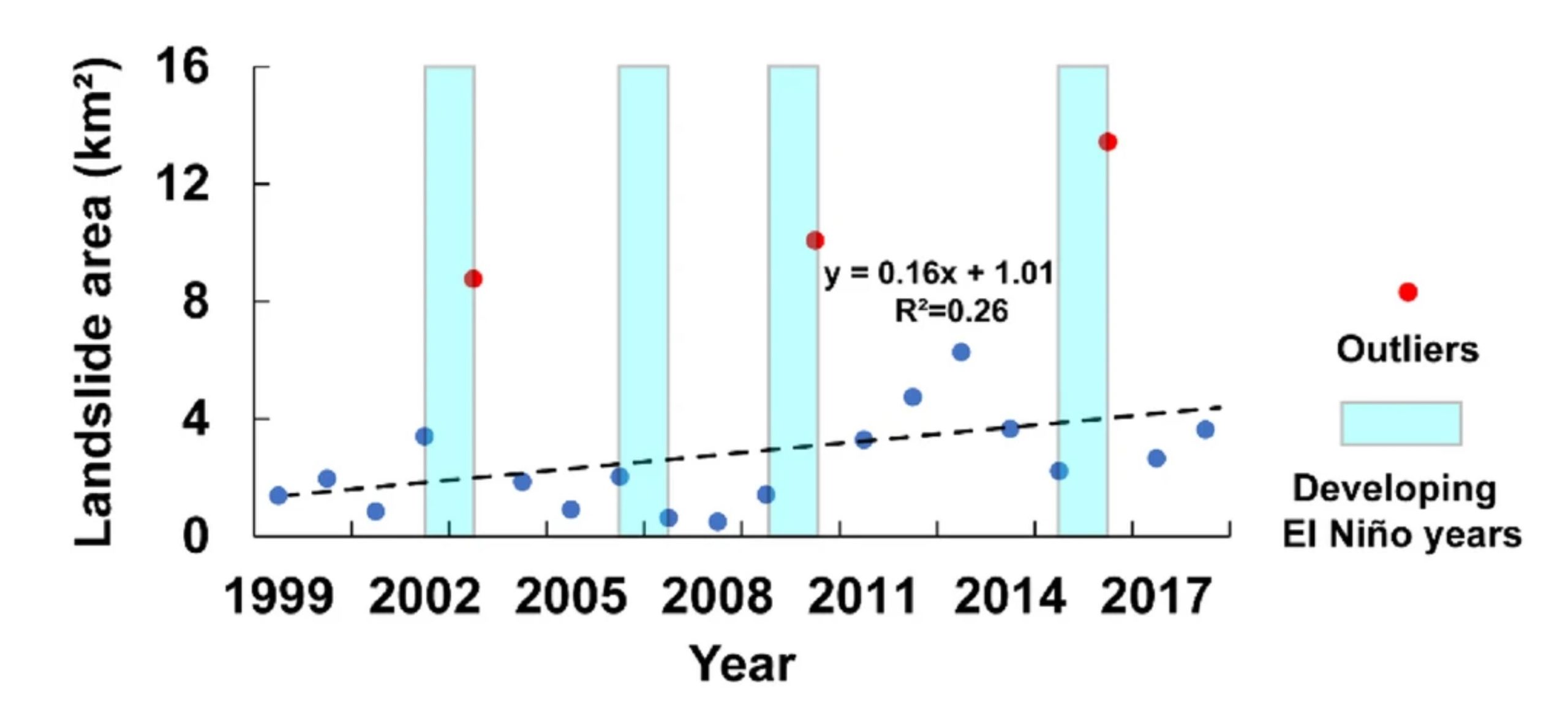25 January 2021
Increasing occurrence of large glacier-related landslides in high mountain areas
Posted by Dave Petley
Increasing occurrence of large glacier-related landslides in high mountain areas
Over the 13 or so years that I have been writing this blog I have frequently featured large landslides in high mountains, often in areas with glaciers. In the last fortnight for example I have described two events in New Zealand, and on a number of occasions there have large landslides of this type on Alaska and Canada, and elsewhere. I have frequently noted that there is good reason to think that the occurrence of these events is increasing, and that they are linked to global heating.
A really interesting paper has just been published in the journal Scientific Reports (Liu et al. 2021) – the good news is that this article is open access, so it is free to all. It seeks to explore this issue in more detail by building a database of large landslides over a 20 year period (1999 to 2018) for a 600,000 km² high mountain area in Asia, centred on the eastern Pamir, western Himalayas, Hindu Kush, Karakoram, and western Kunlun mountains. The dataset has been built using Landsat satellite data, providing consistency in terms of satellite coverage over this period (better instruments are now available, but they do not cover the whole of the time period). The authors have excluded landslides triggered by earthquakes and those that are a long distance from glaciers.
Compiling this inventory was an epic task; in total the authors mapped 127 landslides that fall within their definition. There is a great deal of subtlety in the paper, which is well worth reading, but the headline figure is this one:

The landslide area plotted against the year for large landslides in an Asian high mountain areas. Figure from Liu et al. (2021).
.
There are at least two really interesting aspects to this plot (it takes a little bit of careful interpreting as the x-axis labels are incorrectly aligned). The first is that the landslide area shows a starkly increasing trend with time, even over a 20 year period. Liu et al. (2021) suggest that this might be associated with glacial retreat – they demonstrate in their study that the glaciated area is also decreasing. A significant change appears to have occurred in 2012, but it is not clear why.
The second is that there were three years in which there was an anomalously high landslide area. These years all appear to have been when El Nino conditions were developing. The authors hypothesise that these El Nino years might be associated with high temperatures in the study area (although this did not seem to be the case in one of the four El Nino years).
This really interesting paper is not I think the last word on this topic, but it is further evidence that global heating is hastening the mass wasting of high mountain areas.
.
Reference
Liu, J., Wu, Y. & Gao, X. 2021. Increase in occurrence of large glacier-related landslides in the high mountains of Asia. Scientific Reports 11, 1635. https://doi.org/10.1038/s41598-021-81212-9


 Dave Petley is the Vice-Chancellor of the University of Hull in the United Kingdom. His blog provides commentary and analysis of landslide events occurring worldwide, including the landslides themselves, latest research, and conferences and meetings.
Dave Petley is the Vice-Chancellor of the University of Hull in the United Kingdom. His blog provides commentary and analysis of landslide events occurring worldwide, including the landslides themselves, latest research, and conferences and meetings.